Sr. Riccarda Lazzari
The Prophetic Dimension of the Charism
The prophetic dimension of the charism is implicit in its very nature as an event of the Spirit given to a man or woman founder to build up and to sanctify his Church. A prophet is not someone who predicts the future but, instead, a person who reads in the today of history the project of Salvation.
A prophet is a person who knows how to discern permanent values as opposed to forms that change. A person who has the courage not to remain on the margins of history but, instead, to address challenges and persecutions in order to be an architect and builder of the Kingdom of God. A person who does not go back when faced with difficulties, who is not afraid of being despised, who rejects compromise and ambiguity, and who is even prepared to give his or her life for Christ and his or her brothers and sisters. The prophecy of the women Ministers of the Sick is therefore open to multiple challenges which in this third millennium must be faced up to in the world of health, of illness, and of the pain of humanity.
The challenges are varied and very demanding. I will refer to some of the most important.
The Renewal of Pastoral Care in Health
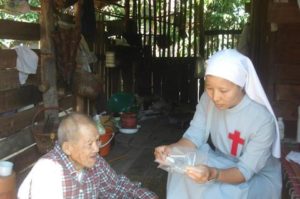 All of the ministry of the women Ministers of the Sick is an expression of pastoral care in health because the carrying out of works of corporal and spiritual mercy expresses the tenderness and the mercy of the Lord towards the sick and the suffering. However, there is a perception of the need to expand horizons as regards forms of expression of this pastoral care and above all to carry out certain shifts, which have only in part been begun. The most important such shifts are:
All of the ministry of the women Ministers of the Sick is an expression of pastoral care in health because the carrying out of works of corporal and spiritual mercy expresses the tenderness and the mercy of the Lord towards the sick and the suffering. However, there is a perception of the need to expand horizons as regards forms of expression of this pastoral care and above all to carry out certain shifts, which have only in part been begun. The most important such shifts are:
- From a pastoral care limited to certain contexts and moments (hospitals, health-care institutions etc.) to a pastoral care that is located on a pathway of the fundamental events of life, of the family, of society, and of culture.
- From a pastoral care that privileges resignation and consolation to a pastoral care that starts from the design of God which in Christ offers life in abundance (cf. Jn 10:10).
- From a pastoral care of a welfare regime to a pastoral care that penetrates inside health-care systems, that cooperates with programmes and decisions, that promotes health, and that creates the culture of life and its ontological and ethical values.
- These objectives are already being implemented but their pathway is long, not easy, and requires the courage of ‘prophecy’.
Multiculturality
The Institute of Maria Domenica is today present in thirteen countries in the world. Indeed, it has many young sisters from different cultural areas and this constitutes riches and hope but, at the same time, amounts to a great challenge for the complete and specific formation of women religious.
However, the spiritual and charismatic identity of the Institute is not identified with a specific culture but, rather, is incarnated in every culture without losing its own identity.[1] This is an important objective in the human, charismatic and apostolic formation of the women Ministers of the Sick. This is a process that requires an openness of mind in order to perceive in the various cultures the humus in which the charism can be embodied and can develop. The following are necessary: discernment, welcome, a capacity for dialogue, and a readiness to change so that the charism can flower in its multiple cultural expressions without losing its identity.[2]
The Vocational Challenge
The crisis of vocations which has been afflicting the West for many years can help to make women religious reflect about the value of our call and mission which are opposed to the values offered by our society of prosperity and consumption.
But this vocational crisis above all asks us about our quality of witness and our capacity to be a sign and provocation of transcendent realities. The objective for an authentic vocational witness is that pointed to by the document Vita Consecrata which asserts that the life of men or women religious must be ‘Confessio Trinitatis, Signum fraternitatis, Servitium caritatis’.[3] This is the first and most important vocational message that greatly appeals to the young generations.
Ethical Pluralism and Bioethics
The current culture of our society is sustained by various philosophies that have given risen rise to various ideas of the person from which ethical pluralism is derived. Politicians, medical doctors, scientists, the mass media and scholars talk about an ethics of medicine that comes from their own beliefs. Against the background of an ethical-pluralistic reality, scientific and technological progress has given rise to new forms of attack on the dignity of the person and delineate and strengthen a new cultural situation that gives crimes against life undue justification: ‘Even certain sectors of the medical profession, which by its calling is directed to the defence and care of human life, are increasingly willing to carry out these acts against the person. In this way the very nature of the medical profession is distorted and contradicted, and the dignity of those who practise it is degraded’.[4] The manipulation of life is carried out today when it is being born: abortion, genetic engineering in its various forms of expression, and when it is in decline: abandonment, marginalisation, euthanasia, etc.
‘Here we are faced with one of the more alarming symptoms of the “culture of death”, which is advancing above all in prosperous societies, marked by an attitude of excessive preoccupation with efficiency and which sees the growing number of elderly and disabled people as intolerable and too burdensome’.[5]
The objective that emerges from these challenges is to implement with due care a form of pastoral care in health that offers itself as a culture of life against the spreading culture of death. It is by addressing these realities that the women Ministers of the Sick can accomplish their mission in the world of health and health care with a presence ‘that is a proclamation of salvation, a sacramental and prophetic sign of the Lord’.[6]
But another challenge calls on the institute of the women Ministers of the Sick and it is openness to lay people in the sharing of their charism. This is a challenge but also a prophecy of a future open to broader horizons in the charismatic and pastoral expression of our mission.
The Charism in Communion with the Laity
The apostolic letter Vita Consecrata specifically observes that: ‘In recent years, one of the fruits of the teaching on the Church as communion has been the growing awareness that her members can and must unite their efforts, with a view to cooperation and exchange of gifts, in order to participate more effectively in the Church’s mission. This helps to give a clearer and more complete picture of the Church herself, while rendering more effective the response to the great challenges of our time’.[7] The same document, when discussing the charism of an institute, declares clearly: ‘many Institutes have come to the conclusion that their charism can be shared with the laity. The laity are therefore invited to share more intensely in the spirituality and mission of these Institutes’.[8] And it goes on to say: ‘A significant expression of lay people’s sharing in the richness of the consecrated life is their participation in various Institutes under the new form of so-called associate members’.[9] All of this does not change the identity of a Christian lay person but helps them to accomplish to the full their own vocation by baptism and to live it in the spirit of the beatitudes, with a view to the transformation of the world according to the heart of God.[10]
Called upon by the voice of the Church, the women Ministers of the Sick, as well, have begun a journey of communion with lay people with a view to sharing with them their charism and spirituality. In truth, for the daughters of Barbantini this is not the beginning of a new reality but, rather, the retrieval of an experience that the Founder herself and the first sisters experienced for decades.[11] In the various missions of the institute, as well, there are numerous groups of lay people who are active in the world of suffering. This reality is undoubtedly a sign of the times which, however, calls on the women Ministers of the Sick as regards formation, accompanying, and the sharing of the charism.
Conclusion
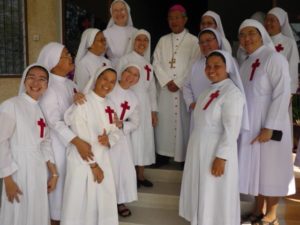 The secret of the prophecy of Maria Domenica lies above else in health care. Animated in everything and always by two great objectives, love for God and love for neighbour, she gave practical form in the history of care to a special charism which still today continues in the world her action of salvation through the institute that she founded.
The secret of the prophecy of Maria Domenica lies above else in health care. Animated in everything and always by two great objectives, love for God and love for neighbour, she gave practical form in the history of care to a special charism which still today continues in the world her action of salvation through the institute that she founded.
Her spiritual daughters, the women Ministers of the Sick, who are present today in thirteen countries in the world, continue her mission of charity at the side of sick people, the dying and the abandoned. The teaching of Mother Barbantini and her prophetic insights are still today of compelling contemporary relevance.
The sharing of the charism with lay people in Italy and in the various missions expands horizons and helps to extend the prophecy of mercy at the side of the sick, the poor and the dying. The Holy Father John Paul II, of venerable memory, in 1995, when proclaiming Maria Domenica a Blessed, offered her to the world as a model of care for the sick with the following words: ‘She left behind her a legacy and a mission which are as contemporary and as valuable as they have ever been: an evangelical and concrete love for the last; a love made up of actions of care and Christian comfort, of generous dedication and of tireless nearness to the sick and the suffering; she expressed in service to the sick the qualities of courage, intelligence and initiative…she translated love into daily service to the marginalised and the wounded’.[12]
Today there is a great deal of talk about the last: the sick, the elderly, the disabled, cancer patients, and so forth. Sociologists, politicians and legislators also talk about them. But the conversion of health-care institutions into companies, although it fosters technological development, does not help to make patients the ‘subjects’ of diagnosis and treatment: it helps to make them, instead, their ‘objects’.
The value and dignity of the sick and the dying are today threatened by the culture of death which is advancing above all in the industrialised and consumerist countries of the world.
The prophetic charism of Barbantini which is today present in various countries of the world through the women Ministers of the Sick can contribute in an effective way to valuing the human dignity of the sick and to constructing in the world of ‘care’ a new civilisation: that of love.[13]
[1] ‘The inculturation of the charism of the women Minsters of the Sick involves placing the charismatic values of the institute at the heart of a culture, expressing them with the terms of that culture, so that they help to provide an answer to the great problems of living, of suffering and of dying, and to promote new ways of serving the sick, thereby becoming through a process of orientation a force of inspiration for that culture and an element for its unification’: A. Brusco, ‘Carisma e sfide multiculturali’, in Atti della II° Assemblea generale della Congregazione delle Ministre degli infermi di S. Camillo sul tema “Identità carismatica”, op. cit., p.78.
[2] Cf. ibid., pp.74-93.
[3] Cf. Vita Consecrata, chaps. 1, 2, 3.
[4] Evangelium Vitae, n. 4 .
[5] Ibid., n. 64 .
[6] Constitution of the women Ministers of the Sick of St. Camillus, Rome, 26 November 2002, art.7.
[7]John Paul II, apostolic letter Vita Consecrata, 1994, n. 54.
[8] Ibidem.
[9] Ibid., n. 56
[10]Cf. Ibid. n. 55.
[11] In the wake of the great founder who preceded her, Mother Maria Domenica already had, in her time, a group of lay women who, attracted by the charism, had given greater meaning to their lives by serving Jesus in the sick and the suffering. In her Rules, the Mother, as early as the year 1841, had already dedicated two chapters to the lay family ‘aggregated’ and ‘associated’ to her Congregation: cf. Regole di Maria Domenica, Scritti, op. cit., pp. 259-261.
[12]John Paul II, homily on the day of her beatification, L’Osservatore Romano, Rome, 7 May 1995.
[13] Salvifici Doloris, n. 30.



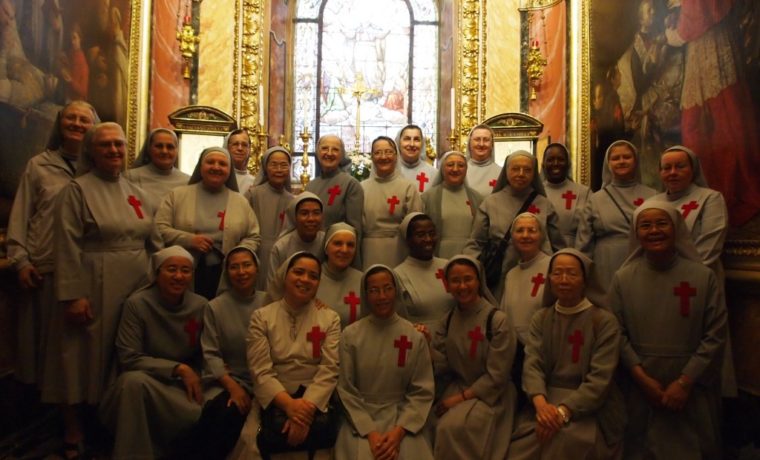
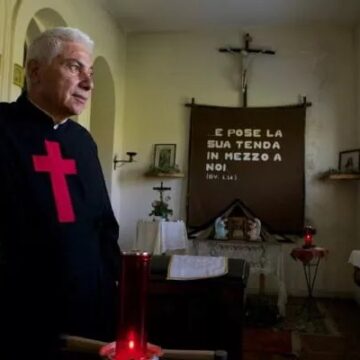

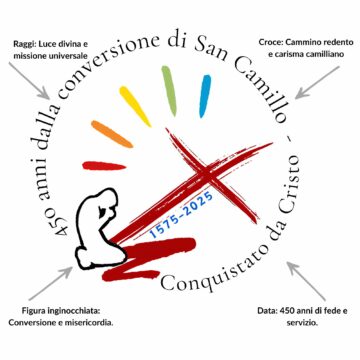


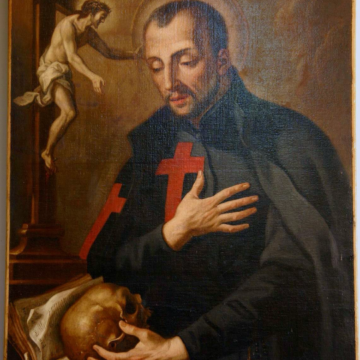
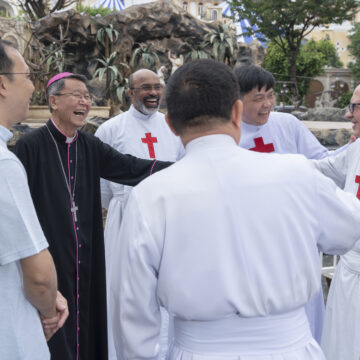

Camillians on Facebook
Camillians on Twitter
Camillians on Instagram